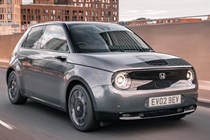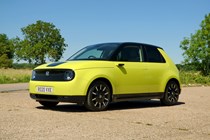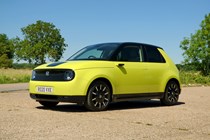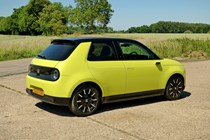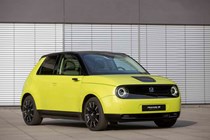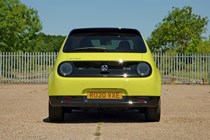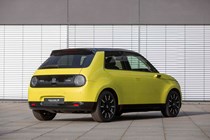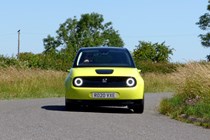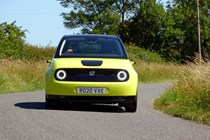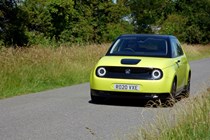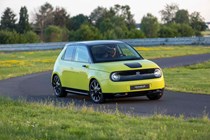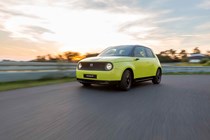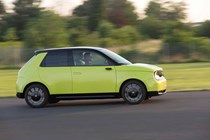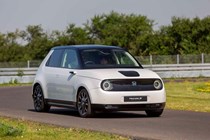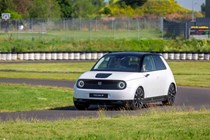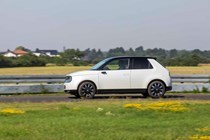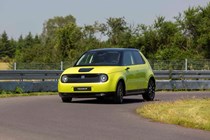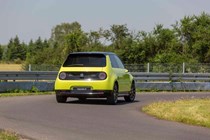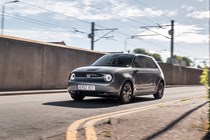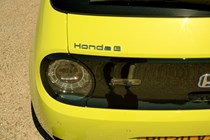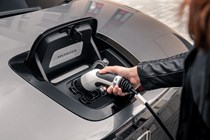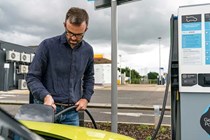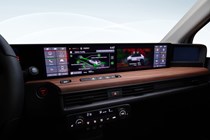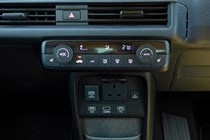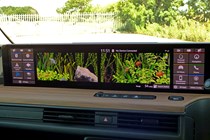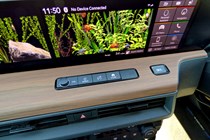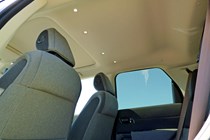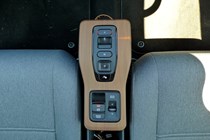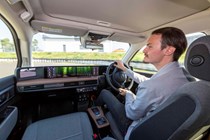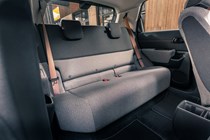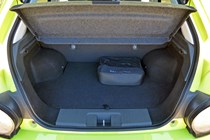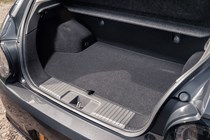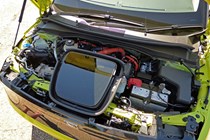
Honda e interior, tech and comfort
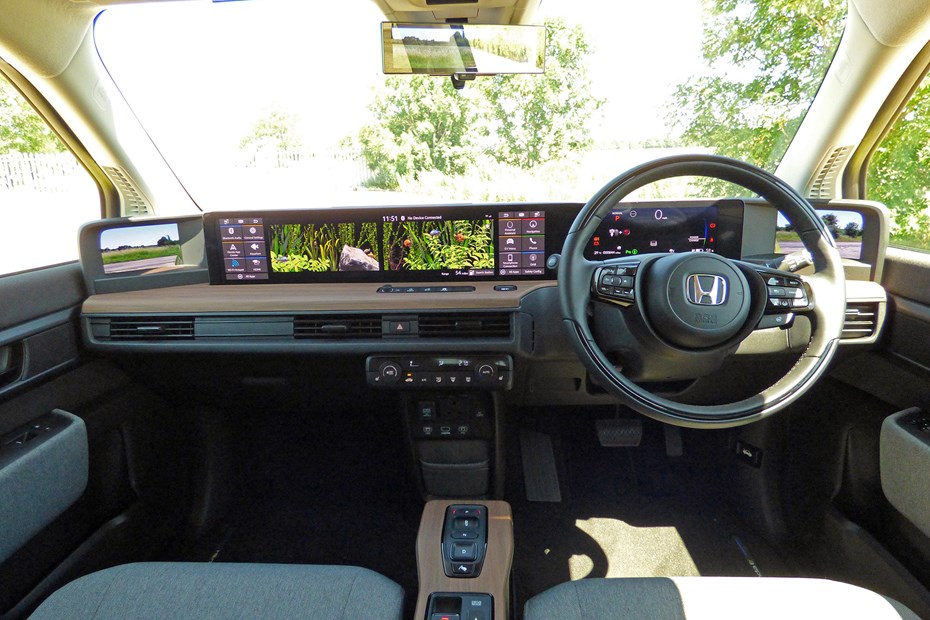
- Hugely different to old Hondas
- Dashboard dominated by large infotainment screens
- Calm and comfortable feel overall
How is the quality and layout?
The Honda e’s cabin is, for want of a better description, just lovely. It’s dripping with nice touches, from the fake-yet-pleasing wood grain on the dash to the ample LED lighting to the chunky, retro, two-spoke wheel. Warm grey fabric dominates, and there’s an overall light and airy feel. Top marks for Honda here.
Everything is where you expect to find it and all the controls work in a logical, sensible fashion. This is good news: you may expect such a techy car to be complicated to drive, but it really isn’t. You simply unlock (hands-free), jump in, select D on the push-button gearbox and creep away silently. It really is that easy.
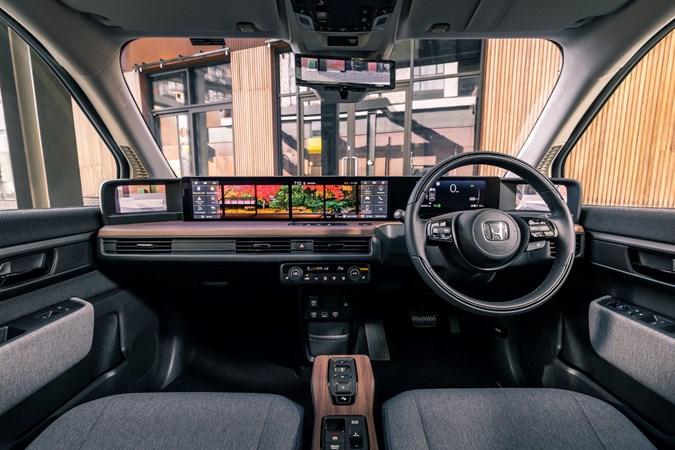
Infotainment and tech
This may only be a city car, but Honda hasn’t held back with the amount of tech on board. The first thing you’ll notice are the wall-to-wall digital widescreens stretching the entire width of the dashboard. Perched neatly across the dashboard ‘shelf’, there’s one TFT display in front of the steering wheel, plus two 12.3-inch screens controlling all the main functions such as radio and sat-nav.
As with many digital dial set-ups, the one in the e displays all trip computer functions, efficiency information and a neat read-out that shows you driving along the road, with animations to the car when you brake, indicate and come across other vehicles. It’s very similar to the display you get in a Tesla in this sense.
The main infotainment screen in the middle is large and crisp, without being over-complicated. The large tiles are easy to poke and prod on the move, and functions like Apple CarPlay and Android Auto are available if you prefer. The best bit is that you can send what’s on this main display across to the one in front of the passenger, and vice versa. This is useful if you have sat-nav instructions on the go, but want to fiddle with any other systems.
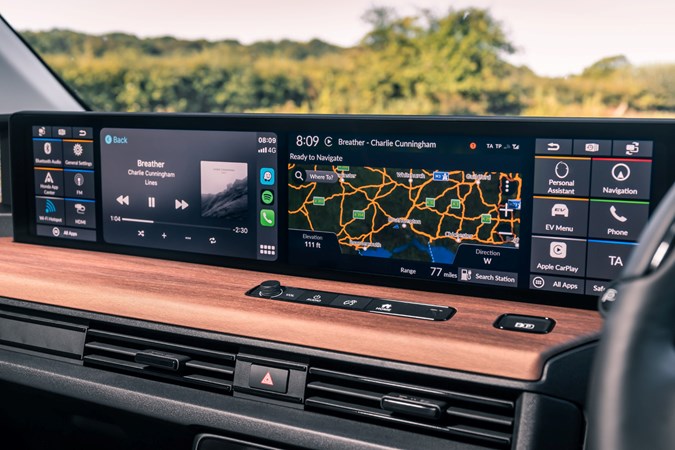
It’s remarkably intuitive, but there are also some nice personal touches to change the wallpaper and even set it up to look like an aquarium across the screens. Distracting? Maybe. Fun? Absolutely.
One of the wilder digital features is the standard-fit digital door mirrors. Yes, there are no physical mirrors, just tiny camera pods that relay their image to screens in the corner of the dash. Sounds wacky, actually works really well. The rear-view mirror is also digital, but the screen resolution is less crisp, meaning you have to refocus your eyes to look at it properly. It’s also prone to rain and spray completely misting up the view. At least you can flick it back to a normal mirror if it’s not behaving.
Comfort
- Honda calls the interior ‘lounge-like’
- Impressively comfortable seats
- Refined in both ride and noise
The driving position is spot-on. It’s easy to see out of and the seat adjusts sufficiently that all drivers – tall or short – quickly get comfortable.
Those nice-looking seats are comfortable, if a little lacking in side support (only really noticeable when you’re doing something like going round a roundabout). The rest of the time you feel relaxed and comfy because of the combination of roominess and accommodating seats. Plus, those screens don’t glare as much as you might imagine, so it’s all very calming.
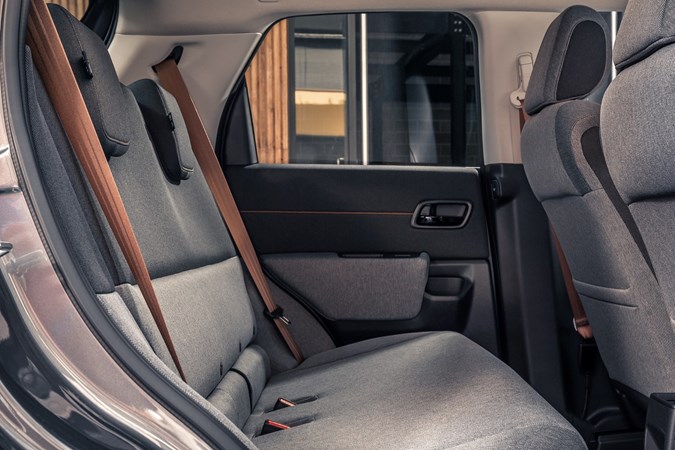
Honda e refinement is pretty good as well. Despite its slightly boxy shape, the e appears aerodynamically sound without too much blustering around the windows, even at motorway speeds. The slimline cameras instead of door mirrors help here, reducing rustling from the door pillars.
The upgraded stereo sound system on Advance models does a fine job of drowning out any other road noise.


